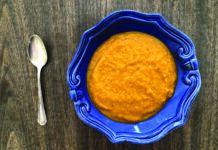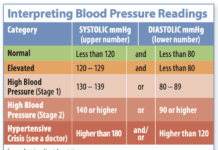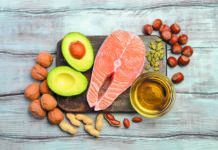
IMAGE © THINKSTOCK
Are you getting the minerals in your diet that you need to help reduce stroke risk? In a new look at data on more than 180,000 women in the Nurses’ Health Study, combined intake of magnesium, potassium and calcium was associated with lower stroke risk. Separately, participants with the highest intake of magnesium and potassium, but not calcium, were also at lower risk.
“Magnesium and potassium are found in similar foods—in particular, in plant-based foods—so it’s not surprising to see similar health benefits associated with both minerals,” says Nicola McKeown, PhD, director of the Tufts Friedman School’s Nutritional Epidemiology Program. “In addition, it’s important to get these minerals from foods rather than from dietary supplements.”
FALLING SHORT: Both potassium and magnesium are minerals that many Americans don’t get enough of. Average US intake of potassium is estimated at 20% below the Adequate Intake (AI) for adults of 4,700 milligrams. One report found that 45% of the population had typical intakes of magnesium below the estimated average requirement (EAR), which is even less than the RDA of 320 milligrams for women over age 30, 420 milligrams for men over 30.
Age further complicates potassium and magnesium intake. Aging tends to decrease the body’s ability to absorb magnesium from foods, while loss of the mineral through the kidneys may increase. Older adults are also more likely to take medications that can interfere with mineral absorption, such as diuretics and laxatives. Proton-pump inhibitor drugs used to fight acid reflux and ulcers can reduce magnesium absorption.
Magnesium and potassium are both important in promoting steady functioning of the heart and helping to control blood pressure—the number-one risk factor for stroke. Because these minerals are found in healthy foods such as vegetables, legumes, fruits, nuts and whole grains (see boxes), it can be challenging for scientists to tease out their specific effects from the overall benefits of a nutritious diet in observational studies. Moreover, observational designs cannot prove cause and effect.
DIETARY ESSENTIALS: The new Nurses’ Health Study results, while observational in design, still provide further incentive for making sure your diet includes plenty of foods rich in these minerals. Researchers combined data from two cohorts, following a total of 180,864 women for either 22 or 30 years; 3,780 of the women suffered a stroke. Using a score to capture the combined intake of magnesium, potassium and calcium, women in the highest mineral intake category were 28% less likely to suffer any kind of stroke. The individual minerals that emerged as protective, however, were magnesium and potassium only. Women whose diets had the highest intake of magnesium had a 13% lower risk of stroke, while women with the highest potassium intake potassium had an 11% lower risk.
How you get your minerals may make a difference, though, with dietary sources largely more beneficial than supplement pills. In this study, supplemental magnesium and calcium intake were not associated with lower stroke risk, and potassium supplements intake was associated with lower risk for only the most common type, ischemic stroke.
Says McKeown, “Foods provide a host of nutrients, rather than supplements which deliver nutrients in isolation; this study found that potassium from food sources was also linked to lower risk of ischemic stroke.”
The researchers, led by Sally N. Adebamowo, MD, ScD, of the Harvard School of Public Health, acknowledged the difficulties of separating the minerals’ benefits from those of the foods they contain. They said their findings, published in the American Journal of Clinical Nutrition, support the stroke-prevention dividends of a prudent dietary pattern high in fruits, vegetables, legumes, fish and whole grains—much like the DASH and Mediterranean diets.
This new study of mineral intake and womens stroke risk also updated a combined analysis of previous prospective studies. Using these new data, researchers estimated that each 100-milligram daily increase in magnesium intake was associated with 13% lower stroke risk. Foods high in magnesium include:
Wheat bran, 1/4 cup89 mg
Spinach, frozen, cooked, 1/2 cup-78 mg
Soybeans, mature, cooked, 1/2 cup74 mg
Nuts, mixed, dry roasted, 1 oz.64 mg
Shredded wheat cereal, 2 large biscuits61 mg
Peanut butter, smooth, 2 Tbsp49 mg
Potato, baked with skin, 1 med.48 mg
Pinto beans, cooked, 1/2 cup43 mg
Rice, brown, long-grained, cooked, 1/2 cup42 mg
Lentils, mature seeds, cooked, 1/2 cup36 mg
Banana, raw, 1 medium32 mg
Halibut, cooked, 3 oz.24 mg
Bread, whole-wheat, 1 slice23 mg
Avocado, cubes, 1/2 cup22 mg
In an updated meta-analysis, using data from several prospective cohorts, for every 1,000-milligram increase in potassium intake the risk of stroke was 8% lower. Foods high in potassium include:
Sweet potato, 1 baked694 mg
Tomato paste, 1/4 cup664 mg
Potato, 1 baked, flesh610 mg
White beans, canned, 1/2 cup595 mg
Yogurt, plain, non-fat, 8 oz579 mg
Prune juice, 3/4 cup530 mg
Halibut, cooked, 3 oz490 mg
Soybeans, green/cooked, 1/2 cup-485 mg
Tuna, yellowfin, cooked, 3 oz484 mg
Lima beans, cooked, 1/2 cup484 mg
Winter squash, cooked, 1/2 cup-448 mg
Bananas, 1 medium422 mg
Milk, non-fat, 1 cup382 mg























